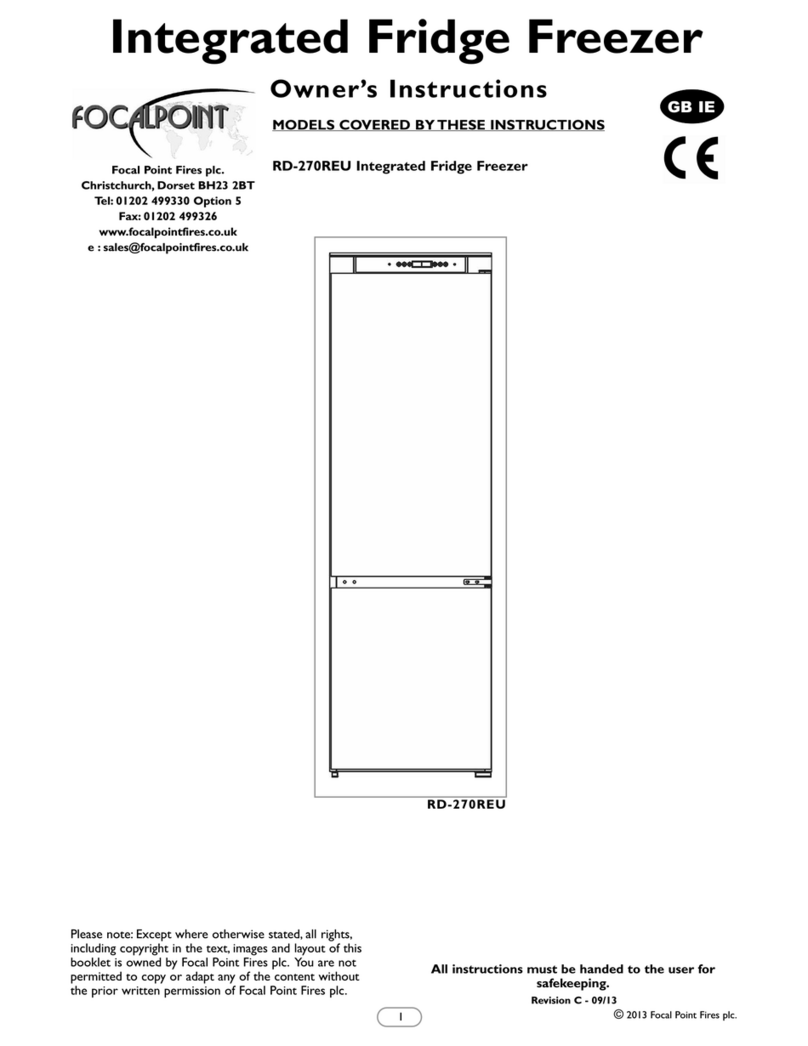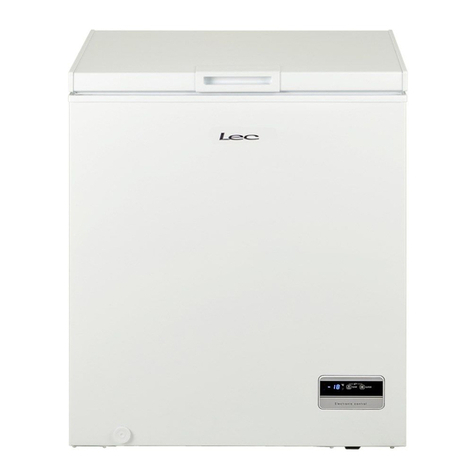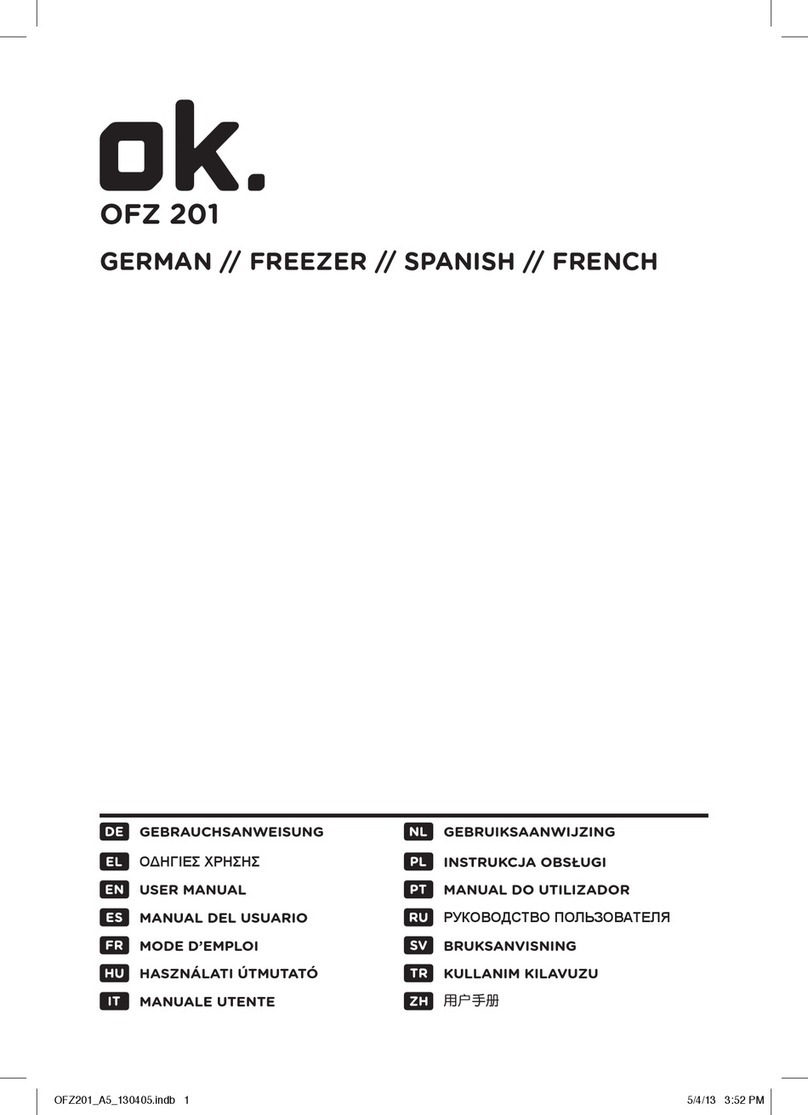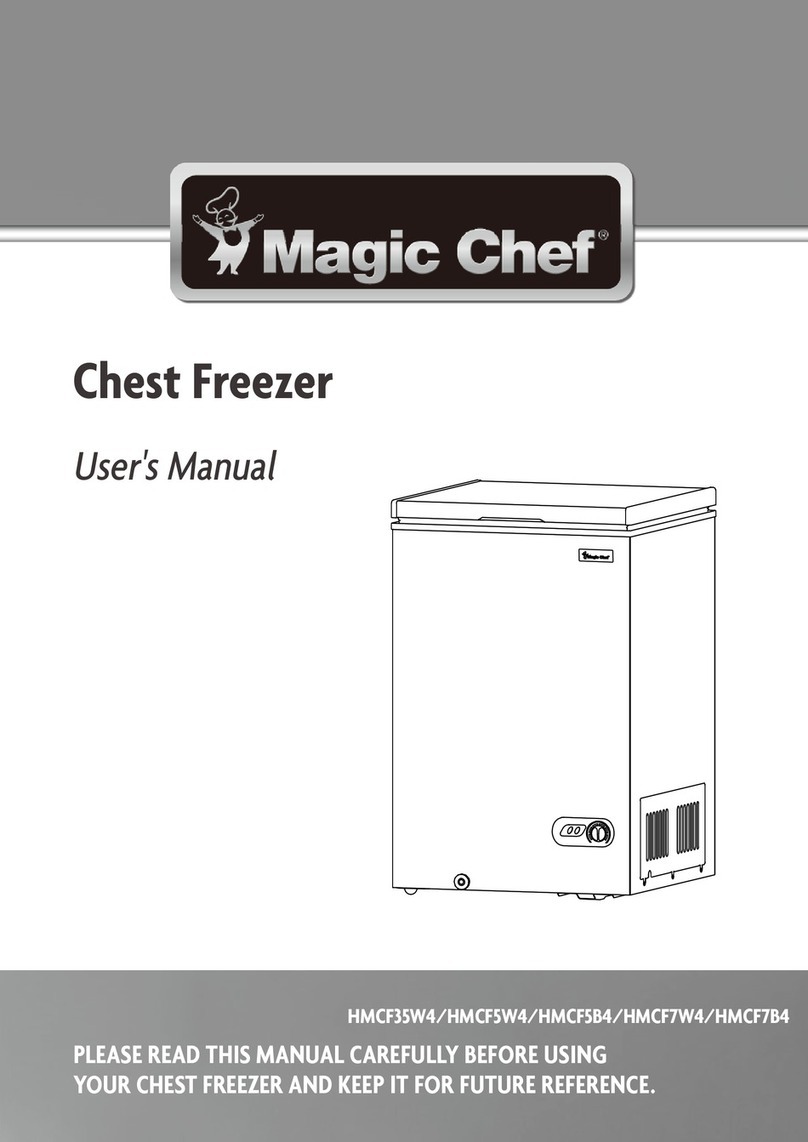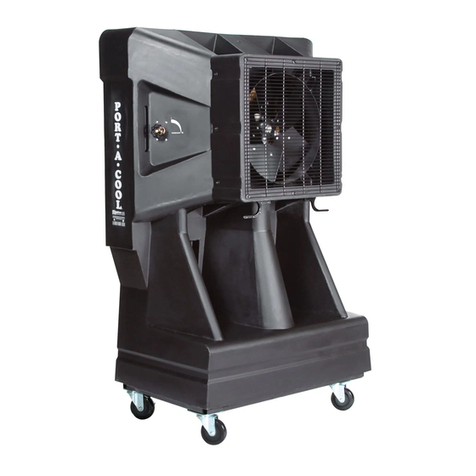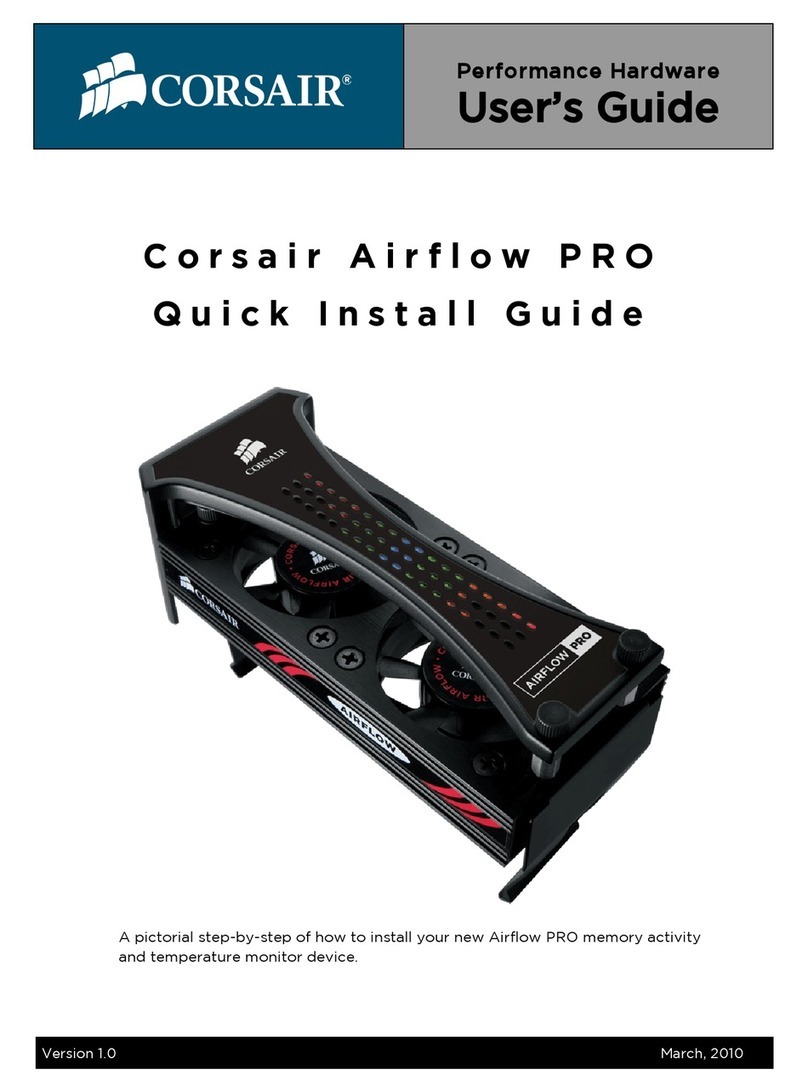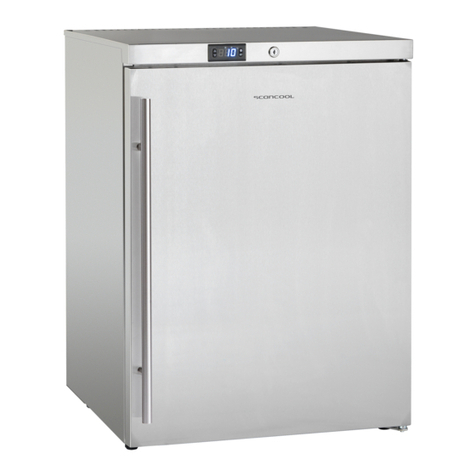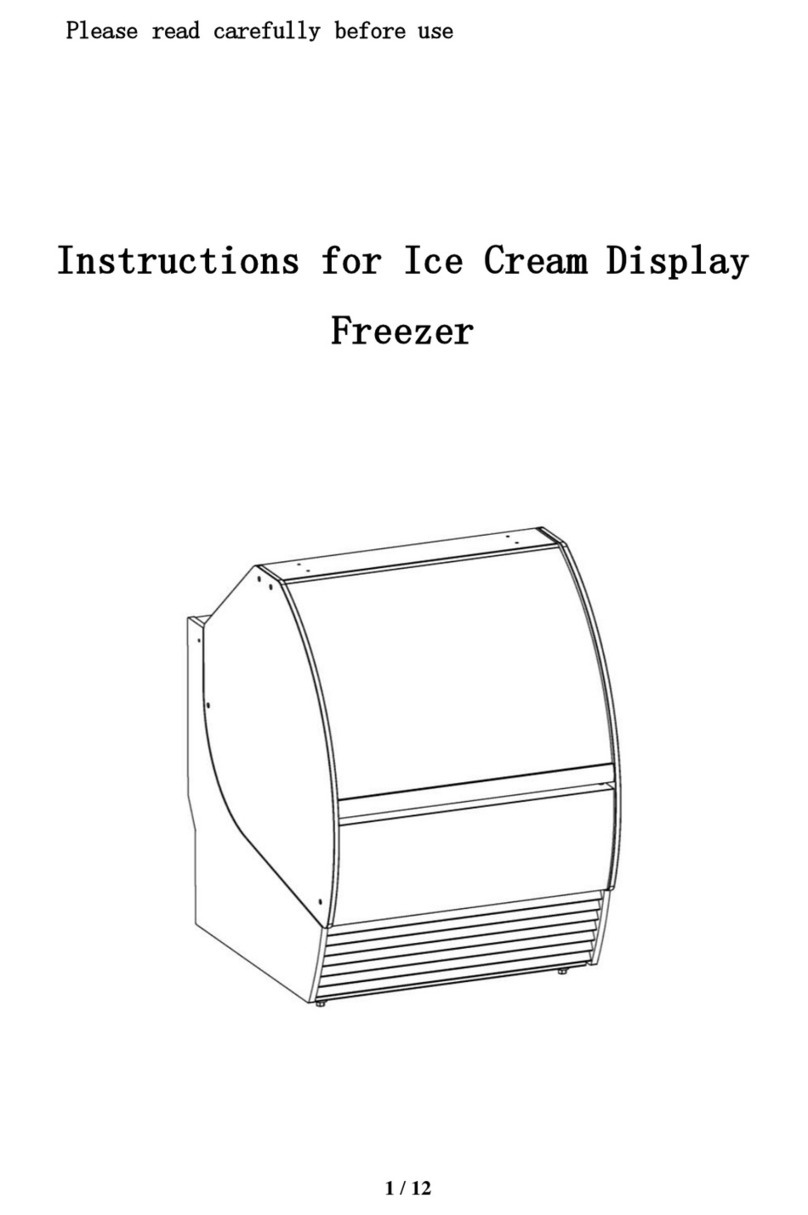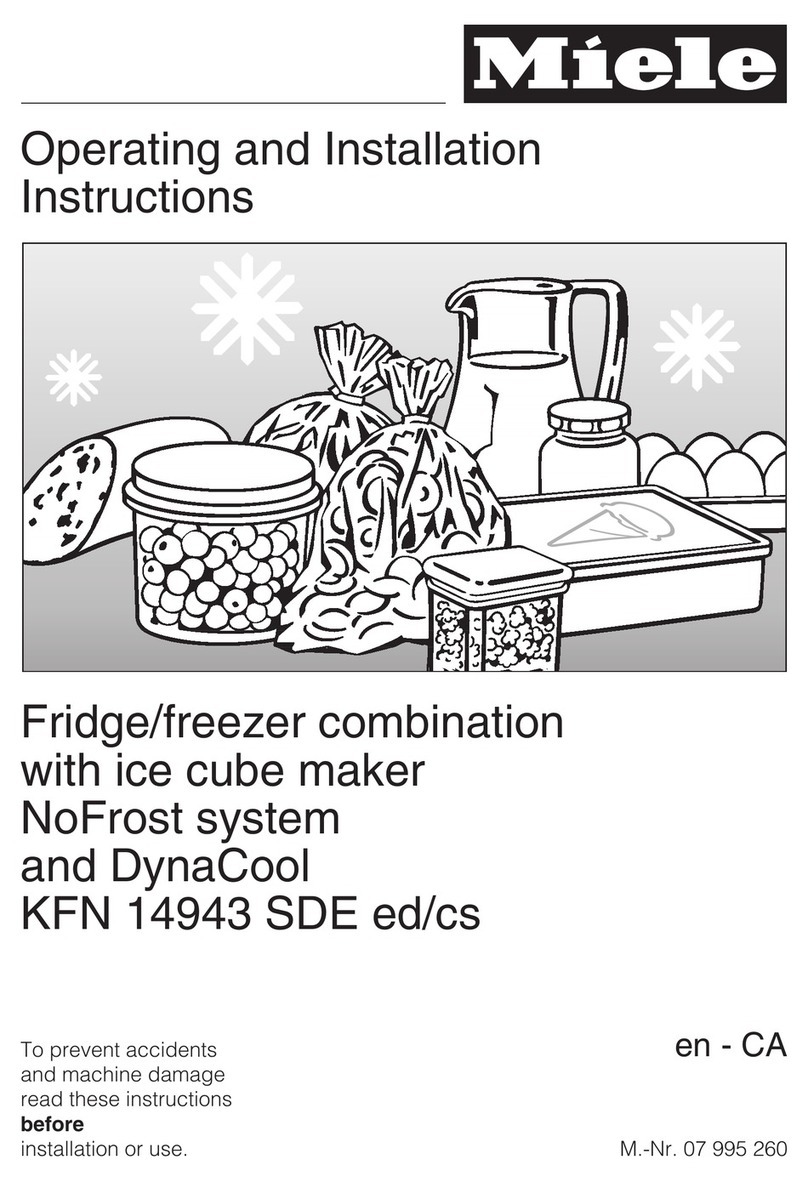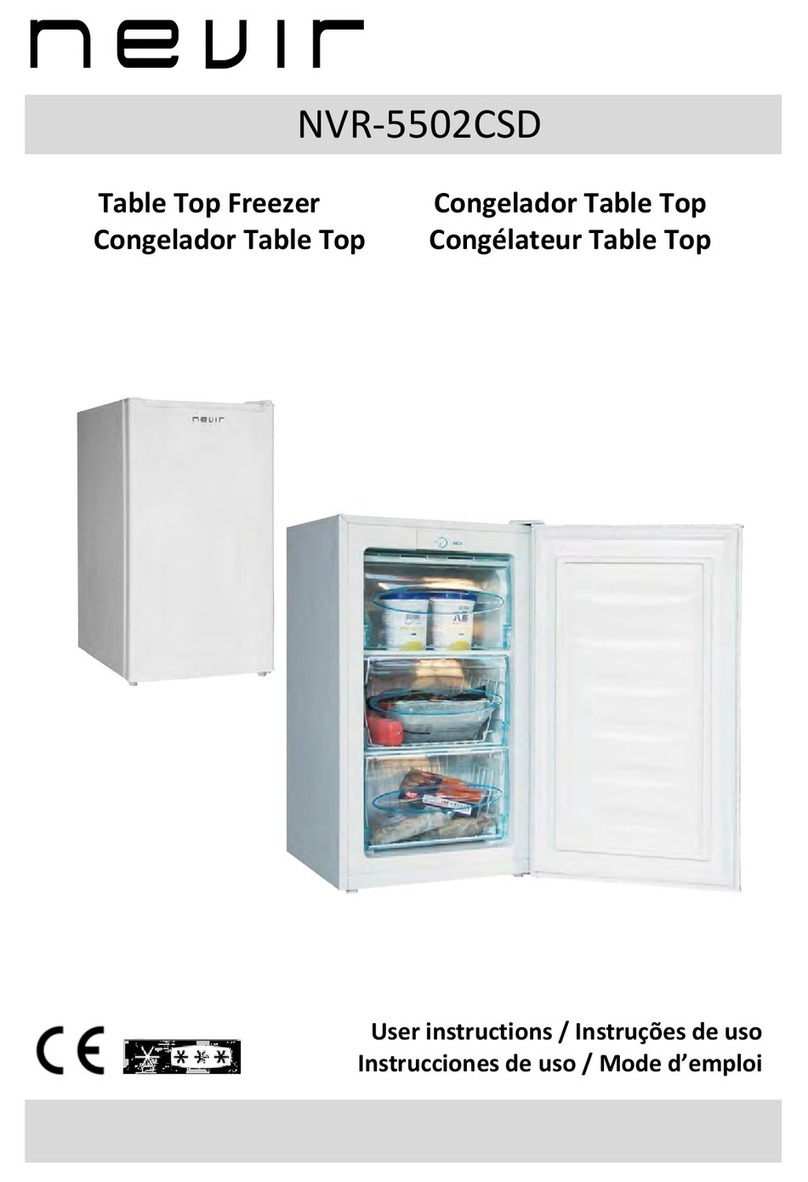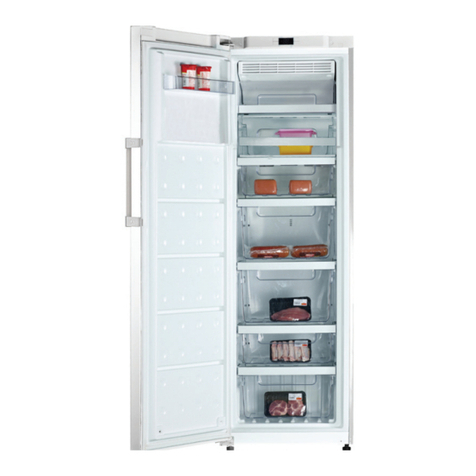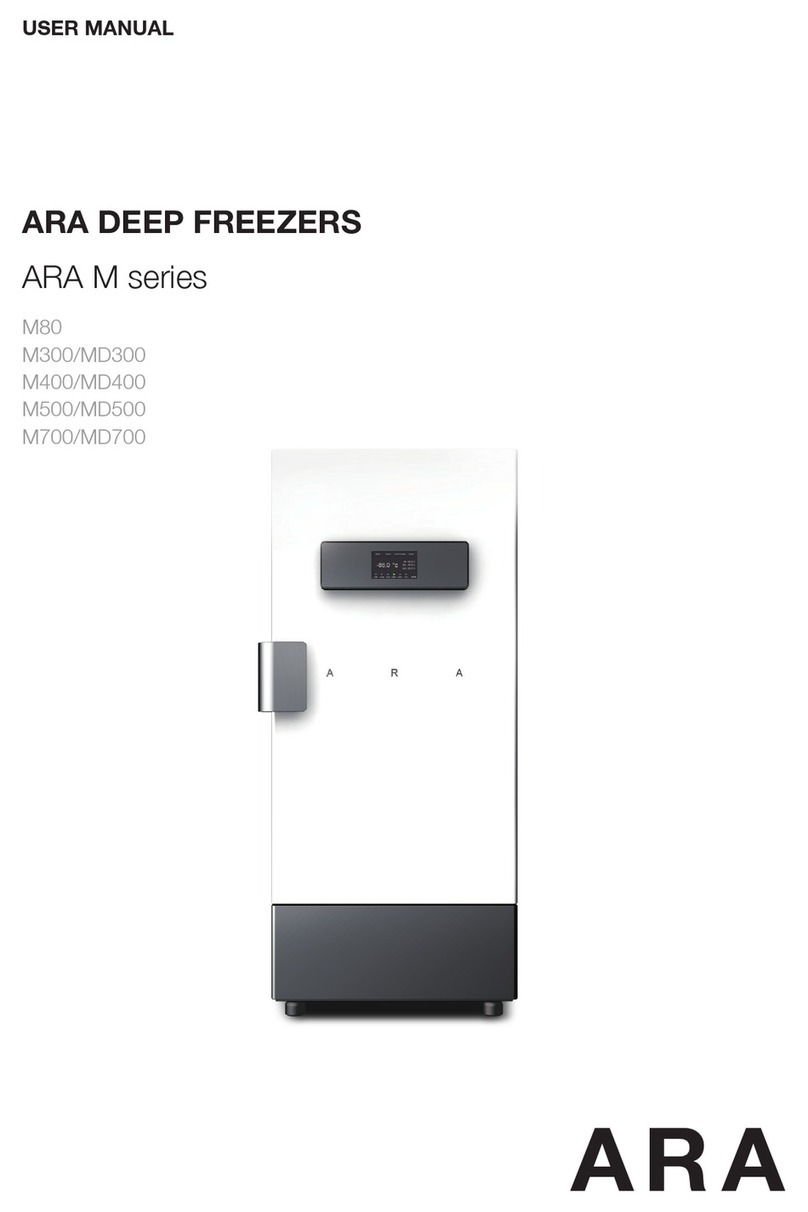Focal Point RD-270REU User manual

©2013 Focal Point Fires plc.
All instructions must be handed to the user for
safekeeping.
Please note: Except where otherwise stated, all rights,
including copyright in the text, images and layout of this
booklet is owned by Focal Point Fires plc. You are not
permitted to copy or adapt any of the content without
the prior written permission of Focal Point Fires plc.
1
Revision C - 09/13
RD-270REU
Integrated Fridge Freezer
Owner’s Instructions GB IE
Focal Point Fires plc.
Christchurch, Dorset BH23 2BT
Tel: 01202 499330 Option 5
Fax: 01202 499326
www.focalpointfires.co.uk
e : sales@focalpointfires.co.uk
MODELS COVERED BY THESE INSTRUCTIONS
RD-270REU Integrated Fridge Freezer

NOTE: Before discarding an old appliance switch off and disconnect it from the power supply. Cut off and
render any plug useless. Cut the cable off directly behind the appliance to prevent misuse. This should be
undertaken by a competent person. Disable any door lock to make sure that children cannot get stuck inside
the appliance.
This appliance is marked according to the European directive 2002/96/EC on Waste Electrical and Electronic
Equipment (WEEE).
By ensuring this product is disposed of correctly, you will help prevent potential negative consequences for
the environment and human and health, which could otherwise be caused by inappropriate waste handling of
this appliance.
The symbol shown in figure 1 on the product or on the documents accompanying the product indicates that this appliance may not
be treated as household waste. Instead it shall be handed over to the applicable collection point for recycling of electrical and
electronic equipment.
Disposal must be carried out in accordance with the local environmental regulations for waste disposal.
For more detailed information about treatment, recovery and recycling of this product, please contact your local authority household
waste disposal service or the shop where you purchased the product.
Your safety is of the utmost important to FOCALPOINT.
Please make sure that you read this instruction booklet before attempting to install or use the appliance. If you are unsure of any of
the information contained in this booklet, please phone the FOCALPOINT advice line.
IMPORTANT: Any installation work must be carried out by a qualified electrician or competent person.
Use of the appliance
Your appliance is only designed to be used in the home. It is suitable for storing food that needs to be chilled and refrigerated. If it is
used for any other purpose or it is not used correctly, FOCALPOINT will accept no liability for any damage that may be caused.
Altering the specifications of the appliance must not be attempted for reasons concerning your safety.
Before using the appliance
Check the appliance for any signs of transport damage. If you notice any damage then you should not connect the appliance to the
main power supply, also contact the manufacturer.
I N S T A L L A T I O N I N S T R U C T I O N S
©2013 Focal Point Fires plc.
2
1.0 ENVIRONMENTAL
Section
1.0
2.0
3.0
3.1
3.2
4.0
5.0
5.1
6.0
6.1
6.2
Contents
Environmental
Important safety Information
RD-270REU Specification
Appliance description
Appliance features
Control Panel
Using your appliance
Turning on the appliances and
setting the thermostat
Storing food in the fridge & freezer
The freezer compartment
Freezer tips
Page No.
2
2
4
5
6
6
7
7
8
8
9
Section
7.0
7.1
7.2
8.0
8.1
8.2
8.3
8.4
8.5
9.0
Contents
Saving energy when using the fridge freezer
Cleaning and maintenance
Replacing the ED panel
Installation
Electrical connection
Positioning
Reversing the RD-270REU doors
Aperture & ventilation requirements
Installing your fridge freezer
Troubleshooting
Page No.
10
11
12
12
13
13
13
18
19
21
2.0 IMPORTANT SAFETY INFORMATION
Figure 1

Refrigeration
Your appliance contains R600a Refrigerant, which is a natural gas that does not contain CFC’s that can damage the environment.
However it is a flammable substance, therefore care should taken:
During the transportation and installation of the appliance make sure that the refrigeration pipework does not get damaged.
If it does become damaged then sources of ignition and open flames should be avoided, also the room that the appliance is situated in
should be thoroughly ventilated.
Do not place any objects on top of the appliance as this may damage the top and block up the required ventilation.
Child Safety
Packaging materials should be kept away from children.
Children should not be allowed to touch the controls or play with the appliance.
General Safety
Do not pull out or insert the plug with wet hands.
Do not attempt to use the appliance outdoors or any place where it is likely to come into contact with the elements.
Before cleaning the appliance or performing maintenance work, ensure that the appliance has been disconnected from the mains
supply.
Never allow the back coils of the appliance to come into contact with the wall surface.
Always ensure that the location where you are installing your appliance is free of stored items such as papers and other flammable
materials.
Never block the ventilation openings of the appliance, either on the inside or its exterior.
It is vital to keep your appliance well ventilated so that there is proper air flow between the bottom of the unit and the plinth/kick
plate which it is sitting on. See section 8.4 Aperture & Ventilation Requirements on page 18.
Do not place electrical devices inside of the appliance such as mixers.
Service
You should not attempt to repair the appliance yourself, as this could cause injury or a more serious malfunction. If you require a
service call then please contact the manufacturer.
2.0 IMPORTANT SAFETY INFORMATION - CONTINUED
©2013 Focal Point Fires plc.
3
GB IE

Appliance dimensions
Height: 1787mm
Width: 540mm
Depth: 544mm
Aperture dimensions*
Height: 1776 - 1782mm
Width: 570mm
Depth: 550mm
Ventilation requirements
Integrated appliances MUST have a minimum of 200cm2free air flow
for ventilation at the bottom and 200cm2at the top of the appliance.
Please see section 8.4 Aperture & Ventilation Requirements for more
information.
Automatic defrost (fridge section only)•
Adjustable thermostat•
Egg rack•
4 General racks•
4 Safety glass shelves (including salad drawer cover)•
2 salad drawers•
3 freezer drawers•
Ice cube tray•
Reversible doors•
4 star freezer•
Energy efficiency class
Energy class: A+
*Please refer to the installation instructions for more specific information on the size of aperture that you will require.
©2013 Focal Point Fires plc.
4
3.0 RD-270REU SPECIFICATION GB IE
1034 1102
540
200 cm
2
544
619
46
20
1769
570
550
1787
38
200 cm
2
Figure 2
Cubic capacities
Gross Capacity: 268 itres
Net Capacity (fridge/freezer) 198/67 itres

Important: when you install the appliance it is important to bear in mind its climate class.
In order to find out the climate class of the appliance you should check the rating plate. The rating plate is located on the inside of
the freezer, its climate class is SN,N,ST.
1. Control Panel
2. Fridge ight
3. Safety Glass Shelves (x3)
4. Salad Crisper Drawer Cover (x2)
5. Salad Crisper Drawers (x3)
6. Freezer Drawers (x3)
7. Fridge Door Shelves (x4)
©2013 Focal Point Fires plc.
5
3.1 APPLIANCE DESCRIPTION GB IE
1
2
3
4
5
6
7
Figure 3

Safety glass shelves
The shelves may be placed in any of the guide slots within the interior of the appliance, they are protected from sliding out.
To remove a shelf take off all of the items that are stored on the shelf that you want to remove. Then lift the rear of the shelf and
carefully pull it out of the grooves.
Defrosting water outlet
The interior of the refrigerator is cooled by the cooling plate that is on the rear wall, beneath this there is a channel and outlet for
the defrost water.
It is important that this channel never becomes clogged (see section 7.1 “the defrost drain hole” section for a detailed explanation of
how to keep the channel clear).
Salad crisper drawers and cover
The crisper drawers are in the bottom of the refrigerator and there is a cover that goes over them.
The cover helps to prevent fruit and vegetables from drying out prematurely.
Upper door shelves
The door liner holds various shelves which are suitable for storing eggs, cheese, butter, yogurts as well as small packages, tubes cans
etc.
Bottle shelf
The lower shelf should be used for storing reasonably sized bottles.
IMPORTANT: IT IS IMPORTANT THAT NONE OF THE SHELVES THAT SIT IN THE DOOR ARE OVERLOADED,
AS THIS WILL DRAMATICALLY REDUCE THE WOR ING LIFE.
Freezer Compartment
A *** Freezer section with a net capacity of 67 litres.
1. The power ED indicator (1) glows red when the appliance is operating.
2. By pressing the ON/OFF button (5) the left hand side indicator (1) turns red, indicating that the appliance is switched on.
3. The Cool Off up and down buttons adjust the operating temperature of the fridge. By pressing both buttons at the same time this
turns the fridge section off. When not in use the display indicates the current operation temperature.
4. The Freezer Off up and down buttons adjust the operating temperature of the freezer. By pressing both buttons at the same time
this turns the freezer section off. When not in use the display indicates the current operation temperature.
5. The Super Cool button (4) places the freezer into fast freeze mode. When in this mode the button will illuminate blue.
6. By pressing the Cool Off (2) up button and freezer off (3) up button together the display switches between centigrade and
Fahrenheit.
7. The light on the right hand side (7) will intermittently turn green to indicate when the compressor is working. The compressor light
comes on as and when required to bring the fridge/freezer down to the required temperature.
6©2013 Focal Point Fires plc.
3.2 APPLIANCE FEATURES GB IE
15 6 7
2 3 4
Figure 4
4.0 CONTROL PANEL

Before switching on
Make sure that it has been installed by a suitably qualified person, as per the information contained in FOCA POINT’s installation
instructions.
After delivery, wait for eight hours before connecting the appliance to the mains supply. This will allow any refrigerant gasses that may
have been disturbed during the transportation process to settle.
The outside of the appliance and the removable accessories contained within it should be cleaned with a solution of liquid detergent
and water.
The interior of the appliance should be cleaned with a solution of sodium bicarbonate dissolved in lukewarm water. The interior and
accessories should be thoroughly dried after the cleaning process has been completed.
There may be an odour when you first switch on the appliance. It will lessen as the appliance starts to cool.
During first use
You should set the displays to their maximum settings for 24 hours after switching on the appliance for the first time.
When you first turn on the appliance the compressor will run continuously for approximately 24 hours or until the fridge/freezer
reaches a cool enough temperature.
During this period of time you should try not to open the door frequently or place a large amount of food within the appliance.
You should then adjust the displays down to their desired temperature.
If the unit is switched off or unplugged, you must allow at least 5 minutes before restarting the appliance on the thermostat or
connecting it to the mains supply.
You switch on the appliance by connecting it to the mains supply and setting the thermostat. The thermostat displays are located on
the control panel, which can be found at the top of the Fridge/freezer.
The thermostat automatically regulates the temperature inside the Fridge/freezer, depending on which setting the thermostat control
has been set to.
The refrigerator can maintain a temperature of between (-1) and (10) degrees centigrade.
The freezer section can cool down to (-30) degrees centigrade.
IMPORTANT: The ambient temperature of the room, the temperature of the food and the amount of food that has been placed in
the appliance and how often the door is opened will affect the temperature being maintained by the appliance.
If the displays are set to a low setting such as (-1) degrees for the fridge and (-25) for the freezer, then the fridge/freezer sections will
work harder to maintain a lower temperature. There is no need to run the appliance on the lower settings.
IMPORTANT: if you run the appliance with the temperature controls on lower settings for prolonged periods, the defrost drain
hole will freeze. It may also cause the appliance to overwork and the fridge and freezer sections to freeze over.
7©2013 Focal Point Fires plc.
5.0 USING YOUR APPLIANCE GB IE
Figure 5
5.1 TURNING ON THE APPLIANCE - AND SETTING THE THERMOSTAT

Warm food or evaporating liquids should not in stored in the refrigerator as this will increase the humidity inside of the appliance.
All foods should be wrapped or covered. This is particularly important if the food has a strong flavour. You should use polythene bags
or sheets, aluminium foils or wax paper. iquids should be stored in covered containers or bottles.
To maximise the space inside of the fridge section, any excessive packaging on the food should be removed.
Quickly perishable food should be stored at the back of the refrigerator where it is the coldest part of it and should not come into
contact with the back of the fridge.
No food items should be allowed to come into contact with the back wall of the refrigerator.
Make sure to arrange food in such a way that the door can close completely. Particular attention should be given to the bottles that
may protrude when placed on shelves inside the main section of the refrigerator.
Some organic solutions such as acids in lemon/orange peels and oils in butter can cause damage to plastic parts contained inside the
refrigerator.
Do not open the refrigerator door too often or leave the door open for long periods of time as this will increase the temperature
inside of the appliance.
Meat should be wrapped in polythene bags and then placed on the glass shelf above the salad drawers.
(Meat should only be stored in this manner for one or two days at the most)
Cold dishes/cooked food should be covered and can be placed on any shelf.
Fruit and vegetables should be cleaned thoroughly and placed in the salad drawers.
Cheese and butter should be placed in airtight containers or they can be wrapped in aluminium foil or polythene bags. As much air
as possible should be removed from the bags.
Milk bottles should have a cap on them and be stored on the bottle shelf that sits in the door.
Garlic, potatoes, onions and bananas should only be stored in a refrigerator IF they are stored in airtight containers
The freezer compartment is suitable for storing and freezing food.
The freezer compartment temperature must have already reached -18 degrees centigrade (or lower) before you attempt to store
food that is already frozen or freezing fresh food.
The freezer compartment is only able to freeze a certain quantity of food at one time. The maximum amount of fresh food that can
be frozen within a 24 hour period is indicated on the rating plate of the appliance. You should not attempt to freeze more than this
amount of fresh food within a 24 hour period.
Warm food should be allowed to cool down before you attempt to freeze it. If you place warm food in the freezer compartment then
the increased humidity will cause ice formation and increase the amount of power that the appliance uses.
The guidance of the food manufacturer should be followed in regard to the maximum storage time.
Thawed foods must not be frozen for a second time.
If power is cut to the appliance then the food inside of it will be safe for a maximum of 24 hours. You should minimise the number of
times that you open the doors of the appliance during this period of time.
8©2013 Focal Point Fires plc.
6.0 STORING FOOD IN THE FRIDGE & FREEZER GB IE
6.1 THE FREEZER COMPARTMENT

Freezing fresh food
To freeze the maximum quantity of fresh food specified on the rating plate you should follow the “Freezing using the super frost
setting” section as per below on page 9 a few hours prior to freezing.
For smaller quantities of fresh food then it should be switched on 1 hour prior to freezing as per the below.
Fresh food should be packed into airtight containers or packaging. This will help to make sure that the food doesn’t dry out or lose its
flavour. It will also ensure that flavour does not transfer from other food.
The food should be placed in the freezer compartment’s base. Do not allow fresh food to touch items that are already frozen.
After 24 hours you should check that the fresh food is satisfactorily frozen. If it is, then the super frost setting should be switched off
by pressing the super frost on/off button again. The super frost setting indicator neon will go out.
IMPORTANT: The super frost setting should not be switched on for prolonged periods of time; otherwise it may
cause the appliance to overwork. It could also cause the fridge and freezer section to freeze over.
Tips on Freezing
Freezer bags, polythene wraps, aluminium foil (extra thick) and special cans for frozen foods are suitable packaging for storing frozen
food.
Tape, rubber bands or plastic clips are suitable for sealing bags and wrapping.
Before sealing a suitable bag you should compress the air out of it as this will help the food more easily.
Flat packages freeze more easily.
If you are freezing liquid then do not fill the container to the brim. iquids will expand when being frozen.
Do not place bottles (glass or tin) containing liquids (especially sparkling liquids) into the freezer as they could cause
the bottle to burst during freezing.
Making Ice Cubes
Fill the ice cube tray with water and place it in the freezer compartment.
After the water is completely frozen and turned to ice, twist the ice cube tray (as shown in the drawing below) to dispense the ice.
Freezing using the Super Frost Setting
If you are freezing the maximum amount of fresh food that can be frozen in a 24 hour period then it should be switched on a few
hours prior to freezing.
If you are freezing a smaller quantity of fresh food then it should be switched on 1 hour prior to freezing.
Press the super frost on/off button and the freezer will start to run continuously at its maximum setting
The green super frost indicator neon will light when the super frost on/off button has neon switched on.
9©2013 Focal Point Fires plc.
6.2 FREEZER TIPS GB IE
Figure 6

Freezing using the Super Frost Setting
There is no need to adjust either of the thermostat displays.
The freezer temperature will decrease and then appliance will get to its lowest temperature.
Place the food that is to be frozen inside the freezer.
Once the food is frozen you should turn off the super frost setting. DO NOT TURN OFF THE SUPER FROST BUTTON
UNTIL THE FOOD IS FULLY FROZEN.
The green super frost indicator neon will go out and the appliance will return to normal operation.
IMPORTANT: The super frost setting should not be switched on for prolonged periods of time; otherwise it may
cause the appliance to overwork. It could also cause the fridge and freezer section to freeze over.
Installing
Install the appliance in a cool position. If it is placed in direct sunlight or next to an oven or other heat sources the energy
consumption can increased substantially.
Ensure the appliance is installed with the correct ventilation requirements. Restricting ventilation can increase the energy consumption
by 15%.
Cleaning and Maintenance
Occasionally clean the condenser coils at the back of the appliance to maintain a high performance level.
Defrost the freezer compartment regularly. A build-up of ice decreases the efficiency of the appliance. Defrost whenever the frost
reaches 5mm thickness.
Clean the door gasket with warm water or a neutral detergent that leaves no residue. A tight-sealing door gasket is critical to the
efficiency of the appliance.
Usage
Do not open the door repeatedly or more frequently than you have to.
Do not set the thermostat too low. A change of just one degree can affect the energy consumption by 5%.
The freezer compartment should operate at -15 to -18 degrees centigrade. The refrigerator should operate at around 3 to 4 degrees
centigrade.
Allow food to sufficiently cool before putting it in the appliance (but do not let it sit at room temperature for too long).
In the freezer compartment, food packages should be scattered and never grouped or stacked together until they are completely
frozen.
If you are going away for a long period of time, turn off the appliance, empty and clean it then leave the door ajar.
10 ©2013 Focal Point Fires plc.
7.0 SAVING ENERGY WHEN USING THE FRIDGE FREEZER
6.2 FREEZER TIPS - CONTINUED GB IE

WARNING: PLEASE ENSURE THAT THE APPLIANCE IS DISCONNECTED FROM THE MAINS SUPPLY BEFORE
ATTEMPTING TO CLEAN IT.
Do not clean the appliance by pouring water onto it or spraying water over it.
The refrigerator and freezer compartment should be cleaned periodically using a solution of bicarbonate of soda and lukewarm water.
Clean the accessories separately with soap and water. Do not clean them in a dishwasher.
Do not use abrasive products, detergents or soaps.
After washing the appliance wipe over the area that has been cleaned with a damp cloth and then dry it thoroughly.
When cleaning is complete, dry your hands and then reconnect the mains plug.
The defrost drain hole
Defrosting occurs automatically in the refrigerator compartment during operation. The defrosted water is collected by the
evaporating tray and evaporates automatically.
The drain hole should be cleaned periodically. This will prevent water from collecting in the bottom of the refrigerator instead of
flowing down the defrost drainage channel and drain hole.
You can also pour a small amount of water down the drain hole to clean the defrost channel.
IMPORTANT: You should be careful to make sure that food packages do not touch the rear wall of the appliance, as this can
interrupt the automatic defrosting process and deflect water into the base of the refrigerator.
Use a solution of bicarbonate of soda and lukewarm water to clean the evaporation tray.
IMPORTANT: It is normal to get some ice droplets forming on the back wall of the appliance. The formation of ice droplets does
not indicate an appliance fault.
Defrosting the freezer compartment
The frost in the freezer compartment should be removed periodically. You can use a plastic scraper to keep down the amount of frost
that builds.
IMPORTANT: The freezer compartment should be defrosted at least twice a year. The number of times that you
need to defrost it will depend on the setting of your thermostat and how much food you freeze and store in the
freezer compartment.
The day before you defrost, you should adjust the thermostat displays to its coldest setting or switch on the super frost setting. This
will make sure that the food contained in the freezer section is frozen properly.
Whilst defrosting the appliance the food should be removed from the compartment and wrapped in several layers of paper and
stored in a cool place. The food’s rise in temperature will shorten it’s storage life and therefore the food should be used within a
relatively short period of time.
DO NOT PLACE FOOD BAC IN THE FREEZER COMPARTMENT THAT HAS STARTED TO THAW.
11 ©2013 Focal Point Fires plc.
7.1 CLEANING AND MAINTENANCE GB IE
Figure 7

Disconnect the appliance from the mains supply.
eave the door to the freezer compartment open. You can place a bowl of warm water inside the freezer compartment to speed up
to defrost process.
Once all the ice that has built up has melted then inside of the freezer compartment should be dried thoroughly. Failure to do this
will result in immediate ice build-up when the appliance is turned back on.
With dry hands, reconnect the appliance to the mains supply. Set the temperature display to it’s maximum setting or switch on the
super frost setting for 24 hours.
You should not attempt to freeze fresh food inside the freezer compartment until this 24 hour time period has elapsed.
Once the 24 hour period has elapsed, you should set the temperature display to its normal operating temperature or switch off the
super frost setting.
Do not defrost the appliance with other electrical devices (e.g. hair dryers). Do not use sharp metal objects to
remove the ice on the freezer, as this could cause damage to the refrigeration system.
All parts removed must be retained to carry out the replacement of the LED
panel. Before removing the LED panel, either unplug the appliance or disconnect
the electricity from the mains power supply. Failure to do so could result in an
electrical shock or personal injury.
Remove the screws with a Phillips screw driver.
Remove the light cover by pulling the bottom end of the light cover gently.
Remove the screws on the ED panel.
Replace with a 1 Watt ED light board that is the same size and shape, and then tighten the
screw.
Replace the light ED panel cover and tighten the screws.
IMPORTANT: Before installation and usage read all the instructions and make sure that the voltage (V) and the
frequency (Hz) indicated on the rating plate are exactly the same as the voltage and frequency in your home. The
rating plate can be found on the front left edge of the inside edge of the refrigerator.
The manufacturer declines all responsibility in the event of the installer failing to observe all the accidental prevention regulations in
force, which are necessary for use and the regular operation of the electric system.
Electrical Connections
THE FRIDGE/FREEZER IS INTENDED FOR FITTED AND PERMANENT INSTALLATION.
We recommend that the appliance is connected by a qualified electrician who is a member of the N I C E I C and who will comply
with the I.E.E. and local regulations.
Your refrigerator comes supplied with a 13 amp plug fitted. If in future you need to change the fuse in the plug then a 13 amp ASTA
approved (BS 1362) fuse must be fitted.
12 ©2013 Focal Point Fires plc.
7.1 CLEANING AND MAINTENANCE - CONTINUED
GB IE
7.2 REPLACING THE LED PANEL
Figure 8
8.0 INSTALLATION

The wiring in the mains lead is coloured as follows:
Brown ive
Blue Neutral
Green and yellow Earth
As the colours of the wires in the appliance’s mains lead may not correspond with coloured markings identifying the terminals in your
spur box, please proceed as following:
The Brown wire must be connected to the terminal marked “ ” ( ive) or coloured Red.
The Blue wire must be connected to the terminal marked “N” (Neutral) or coloured Black.
The Green and Yellow wire must be connected to the terminal marked “E” (Earth), or by the earth symbol or coloured Green
and Yellow.
When the connection is completed no stray strands or cut wire should be present. The cord clamp must be secured over the outer
sheath.
It is advised that the appliance is only installed in a location where the ambient temperature of the room, corresponds with the
climate classification that is stated on the rating plate of the appliance. The appliance may not function correctly if the ambient
temperature falls outside of the following ranges.
The appliance should not be located in direct sunlight or exposed to continuous heat or extremes of temperature (e.g. next to a
radiator or boiler).
The door should be able to open completely and freely.
The appliance should be situated so the food stored inside can be easily accessed.
Check whether there is an electrical socket available, which will be accessible after the appliance is installed.
The doors of the Fridge/freezer can be set to open from the left or the right. If you want the doors to be hinged on the left hand
side and opening from the right hand side you will need to follow the door reversal process.
IMPORTANT: If required, the doors should be reversed PRIOR to installing the appliance into the housing unit.
CAUTION: While unscrewing any of the fixing hinges, hold the door to prevent it from falling and causing damaged.
Any parts that you remove from the appliance whilst reversing the door, should be retained for later use.
13 ©2013 Focal Point Fires plc.
8.1 ELECTRICAL CONNECTION GB IE
Climate Classification Appropriate Ambient Temperature
SN + 10 to + 32 degrees centigrade
N + 16 to + 32 degrees centigrade
ST + 18 to + 38 degrees centigrade
8.2 POSITIONING
8.3 REVERSING THE RD-270REU DOORS

Tools Required
1. Grip Pliers
2. Bladed Screwdriver
3. Phillips Cross Headed Screwdriver
A) Remove the upper support plate by removing the screws from the top
and sliding the support plate forward. As shown in Figure 10.
B) Remove the hinge cover by lifting it off from the position shown in the
photo position. As shown in Figure 11.
C) Unscrew the two screws on the hinge then remove the top hinge. As
shown in Figure 12.
D) Remove the refrigerator door by lifting it upwards and away from the middle hinge.
As shown in Figure 13.
Place it on a cushioned surface to ensure that the door does not receive damage.
14 ©2013 Focal Point Fires plc.
8.3 REVERSING THE RD-270REU DOORS - CONTINUED GB IE
Figure 9
Figure 10
Figure 11
Figure 12
Figure 13

E) Unscrew the two screws and remove the central hinge. As shown in
Figure 14.
F) Remove the freezer door by lifting it upwards and away from the lower
hinge As shown in Figure 15.
G) Unscrew the two screws and remove the lower hinge. As shown in
Figure 16.
H) Refit the lower hinge on the opposite side. As shown in Figure 17.
IMPORTANT: The position of the hinge pin must be changed from the
right hole to the left hole. As shown in figure 17.
15 ©2013 Focal Point Fires plc.
8.3 REVERSING THE RD-270REU DOORS - CONTINUED GB IE
Figure 14
Figure 15
Figure 16
Figure 17

I) Remove the screw hole covers. As shown in Figure 18.
IMPORTANT: the screw cap and screw hole covers should be retained
for use on the opposite side of the appliance.
) Refit the freezer door. As shown in Figure 19.
Reinstall the middle door hinge on the opposite side from its original
position.
IMPORTANT: The hinge pin should be fixed in the position shown in the
photograph.
L) Refit the refrigerator door and install the new door hinge bracket (part
of the fixing kit). As shown in Figure 20.
Figure 21 shows the new left side top hinge which is part of the
fixing kit and the original hinge bracket. Remove the hinge pin
from the right hinge and reuse on the left hinge.
16 ©2013 Focal Point Fires plc.
8.3 REVERSING THE RD-270REU DOORS - CONTINUED GB IE
Figure 18
Figure 19
Figure 20
Figure 21

M) Refit the upper support bracket along with the hinge cover.
As shown in Figure 22.
IMPORTANT: Check that both the upper and lower doors open and shut correctly without fouling after you have
completed the door reversal process.
After the door has been reversed, you should check the door seal of the fridge and freezer door. Neither seal should
be creased or crushed; otherwise there will be a gap between it and the inside of the door.
The seal must adhere properly all the way around the door.
If either seal is not adhering to the cabinet properly then you should either.
1.Use a warm damp cloth and manipulate the seal until it does adhere to the cabinet properly all the way around the door.
Or
2.Use a hair dryer on its lowest heat setting and lightly heat the areas of the door seal that are not adhering correctly. The heat will
make the seal more pliable and this will allow you to manipulate the seal into the correct position.
IMPORTANT: Only use the lowest setting of the hair dryer and do not heat the seal for long periods of time
otherwise irreversible damage may be caused and this will not be covered by your guarantee.
IMPORTANT: When you have reversed the doors of the appliance and if you have placed the appliance on its side,
you must wait for 8 hours before switching the appliance back on.
17 ©2013 Focal Point Fires plc.
8.3 REVERSING THE RD-270REU DOORS - CONTINUED GB IE
Figure 22
Figure 23
Figure 24

The appliance aperture should be:
Height 1780mm
Depth 550mm
Width 570mm
1) The height of the aperture needs to be exactly 1780mm.
If necessary, you should utilise extra filler shelves to fill any
additional space that you have in the aperture. As shown in Figure
26.
2) IMPORTANT: Integrated appliances MUST have a minimum of
200cm2free air flow for ventilation at the bottom and 200cm2at
the top of the appliance. Please see figure 28. Without the required
ventilation the fridge/freezer will not function properly.
The minimum amount of ventilation that is required. As shown in Figure
28.
18 ©2013 Focal Point Fires plc.
8.4 APERTURE & VENTILATION REQUIREMENTS GB IE
Figure 25
Figure 26
Figure 27
min 200 cm
2
min 200 cm
2
Figure 28

Please note: This section applies to a fridge/freezer which doors open from the
right hand side. If your fridge/freezer doors open from the left hand side then
installation stages will need to be reversed.
A) Install the application towards the left hand side of the housing unit
leaving a gap of approximately 5mm. As shown in Figure 29.
B) Fix the appliance to the top shelf of the housing unit.As shown in Figure 30.
IMPORTANT: This will help to keep the appliance vertically parallel with the
décor doors.
C) Measure a distance of approximately 40mm between the front edge of the
housing unit and the front edge of the appliance. As shown in Figure 31.
D) Fix the appliance into position. As shown in Figure 32.
E) Trim the side gasket to an approximate size and then insert it into the 5mm gap
that you left on step A. As shown in Figure 33.
19 ©2013 Focal Point Fires plc.
8.5 INSTALLING YOUR FRIDGE FREEZER GB IE
Figure 29
Figure 30
Figure 31
Figure 32
Figure 33

F) Fix the bracket that is supplied with the fixing kit into position. As shown in
Figure 34.
G) Fix the flat bracket that is supplied with the fixing kit, on the opposite side of
the appliance. It should be inserted behind the central hinge. As shown in Figure 35.
H) The flat bracket can be inserted behind the central hinge without taking the
hinge apart. This can be done by loosening the two screws, which can be found
behind the hinge. Once the flat bracket has been inserted behind the central hinge,
the screws must be fully tightened.
I) install the slider guides on the edge of the appliance doors (there are 2 slider
guides per door). Insert the sliders into the slider guides. Mark the distance from
the front edge of the furniture door to the edge of the slider. The measurement
should be approximately 20mm. Fix the sliders into position; the screws must be
fully tightened. As shown in Figure 36.
J) Check both furniture doors open and close properly without fouling on the
kitchen cabinet. You should also ensure that the doors of the appliance and the
door seals are shutting properly against the cabinet of the fridge/freezer. As shown
in Figure 37.
k) Installation is now complete.
20 ©2013 Focal Point Fires plc.
8.5 INSTALLING YOUR FRIDGE FREEZER - CONTINUED GB IE
Figure 34
Figure 35
Figure 36
Figure 37
Table of contents
Other Focal Point Freezer manuals
